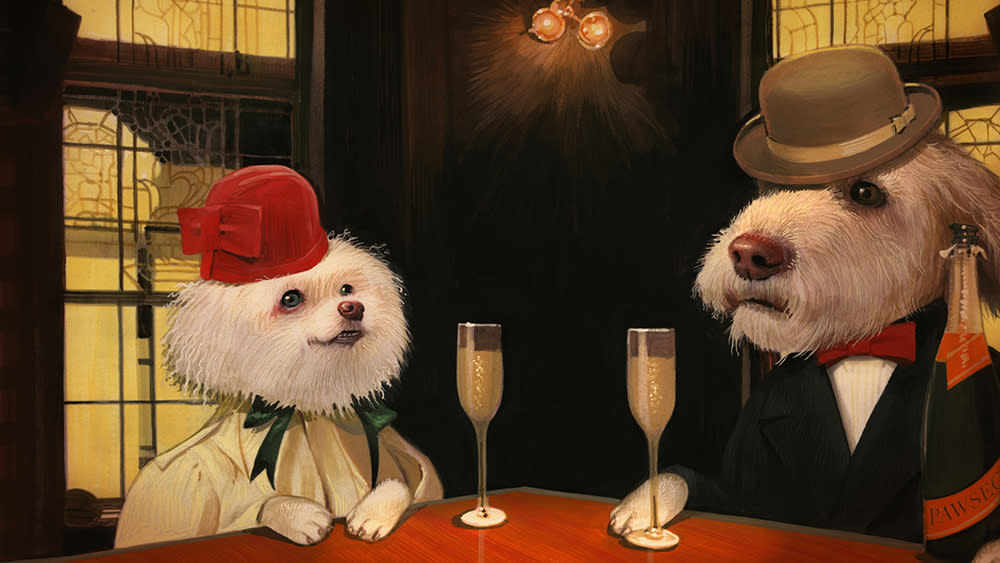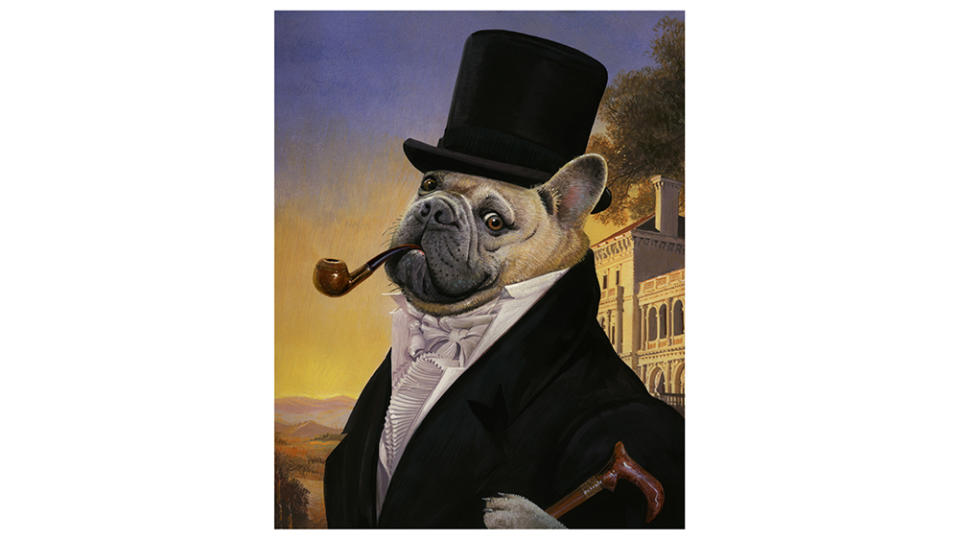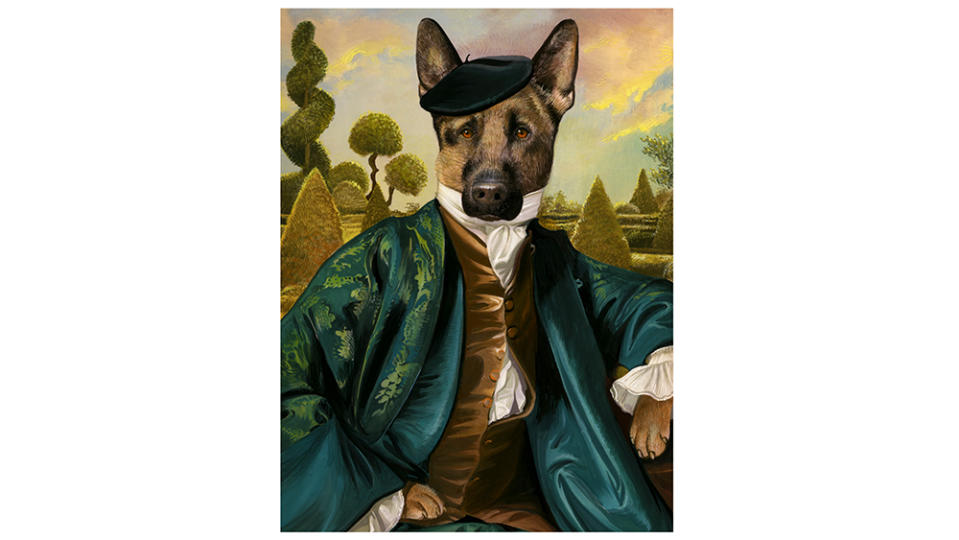How Our Obsession With Designer Dogs May Harm the Very Animals We Claim to Love

In the pit of existential despair that was March, many of us spent considerable time panic-buying on the internet: flour, hand sanitizer, yeast, Scrabble, beard trimmers—and puppies. Just as with toilet paper, suppliers struggled to meet demand and, consequently, hiked their prices. Six months on, the craze for pandemic puppies is throwing a light on the murky ethics of pedigreed and designer dogs, as governments begin to crack down on fashionable breeds.
During lockdown, puppies appealed both to single people facing months without human contact and to desperate parents seeking playmates for their lonely, screen-addicted children. Pandemic dog fever was particularly fierce in locked-down Spain, where people were allowed to leave their homes only for essential reasons, one of which was walking your dog, leading to a flurry of illicit pet rentals.
In the US, there has been a run on canines of all kinds, from rescue mutts—ASPCA shelters reported a 400 percent rise in adoption applications in March and April—to pedigreed pooches and designer crossbreeds. The American Kennel Club (AKC) reported a spike in purebred puppy registrations starting in March; at its British counterpart, the Kennel Club, searches for purebred pups on the club website in May were up 237 percent from the previous year.
Designer crossbreeds have also been in high demand. “I am sold out for the next nine months,” says MaryPat Thate, a New Hampshire breeder of Australian Labradoodles (a variant of the popular Labrador/poodle cross with an added soupçon of cocker spaniel).
“Most good breeders’ wait lists are full for summer and into the fall,” says Debbie Dixon, president of the Goldendoodle Association of North America.
Dogs were already having a moment before the pandemic hit. This year, Americans are expected to spend nearly $100 billion on their pets—the most popular of which are dogs—a rise of 10 percent in two years, according to the American Pet Products Association. A study by TD Ameritrade found that more than half of millennials have dogs and that those owners were prepared to spend more on a pet during its short life than on their own adult lifetime health care.
Rising prices mean that it’s now not uncommon for a fashionable pooch to command $5,000. The “pet parent” of a dog- about-town, with its own trainer, walker, sitters, veterinarian, organic grain-free food, CBD treats and, of course, chic jackets, booties and toys, can expect to spend $18,000 the first year and $14,000 annually thereafter. The truly stylish pup will also require the right carrier (about $3,000 at Louis Vuitton) plus collar and leash (figure $600 for the set at Tiffany & Co.).

Dog culture may be reaching self-parody levels of excess. In New York, fur babies can enjoy Reiki sessions and doga (dog yoga) classes. In Washington, D.C., they can check into the Watergate Hotel for a Presidential Pooches package, where the in-room doggy dining menu features grass-fed lamb, caramelized onions and mashed potatoes. After a working day at one of San Francisco’s many dog-positive tech workplaces, Dooglers (as the hounds and terriers of Googlers are known) can have a blueberry facial at the Pawington spa while their owners catch up on the Bay Woof newspaper, stroll to Le Marcel’s canine bakery to pick up some animal-friendly s’mores or perhaps sip a Pawsecco at one of the city’s many yappy hours. Naturally, this being the capital of biohacking, dead pets can live on in the form of a diamond made from their ashes, or as a clone, or in the freezer, courtesy of cryogenic preservation.
On the surface, it’s all frivolous fun, but beneath the skin, things are turning ugly. The picture-perfect pup online or in the pet-store window often has a sordid backstory. High demand means a lucrative market for smugglers (in June, 38 dead puppies were found at a Toronto airport in crates containing 500 French bulldogs) and puppy mills, where dogs are kept in inhumane conditions and bred at high volume, often to close relations, before being sold online or through pet stores. In April, the UK banned the sale of dogs and cats in pet shops, and New York looks likely to become the third US state to follow suit.
Yet a breeder’s pedigree certificate is no guarantee of well-being. Some would argue it’s the opposite. In response to health concerns, the Dutch government announced in May 2019 that it would enforce a breeding ban on some 20 popular types, including English and French bulldogs, pugs, Pekingese and King Charles spaniels. Decades of deliberate muzzle shrinkage to achieve a “cute” squashed-face look have often resulted in excess soft tissue that blocks the noses and throats of these brachycephalic (shortened head) varieties, leading to serious breathing problems. Pedigree breeders fear other jurisdictions will follow suit.
The concerns relate to the lack of genetic diversity that is inherent in the very concept of a purebred dog. Starting in the 18th century, new breeds such as retrievers were constructed “from scratch” using selective breeding to fix desirable traits, says Ciara Farrell, the librarian and collections manager at the UK Kennel Club. Pedigree breeding is strictly limited to certified dogs of the same breed to ensure predictability. Dogs must be of immaculate lineage, according to rules set by breed clubs and the AKC, and most certainly unpolluted by crossbreeding (mating between dogs of different breeds). Pedigree breeds originate from a small foundation stock, occasionally invigorated by an injection of imported sperm from a foreign dog of the same breed, but the gene pool inevitably remains shallow.
The concept of “good breeding” in a dog (not to mention a human) still confers a somewhat dubious prestige. Harrison K-9, a company that sells guard dogs for up to $50,000 each, promotes the “superior intellect, conformation and lineage that can only be found in an imported European German Shepherd.” Breeders of dogs favored by the military are particularly drawn to the allure of the elite. Kate D. Grant, a Colorado specialist in Belgian Malinois, an attack dog used by the US and Chinese militaries, likens her business to a “high-performance car manufacturer, obsessed with performance on every detail.”
But there is a (literally) fatal flaw in the design. Hannah Betts, a London journalist and owner of what she describes as “a beautiful blue Kennel Club whippet, as ritzy as they come,” once had “some superstitious belief in the pedigree system.” But after suffering multiple illnesses, her dog, Pimlico, is now uninsurable in that regard. Betts says it is accepted wisdom in the dog park that purebreds are more susceptible to disease.
Keeping it in the family didn’t work for the Hapsburgs, and it doesn’t work for dogs. Inbreeding shrinks the gene pool and increases the likelihood of mating “between individuals carrying copies of the same genetic mutation,” says James Serpell, professor of ethics and animal welfare at the University of Pennsylvania. As a result, pedigree dogs suffer from 396 separate inherited disorders, according to a 2015 report in the journal Canine Genetics and Epidemiology.
Dog-show champions are lucratively mated multiple times, often to their own relations. Journalist Jemima Harrison’s 2008 BBC documentary, Pedigree Dogs Exposed, led to a biting report by UK parliamentarians, and the BBC dropped the Kennel Club’s dog show, Crufts. Harrison points out that Wasabi, the Pekingese winner of the AKC national championships in December, was so inbred that his grandfather, great-grandfather and great-great-grandfather were all the same dog. “This level of inbreeding—and actually much worse—is extremely common in the show world,” she tells Robb Report.
A related pedigree curse is also largely driven by dog shows. Purebreds must conform to strict standards of appearance in order to stand a chance, and judging is heavily based on conformation. This system has incentivized selective breeding toward exaggerated features. “The ring standards are very strict and very old, and they do not allow for discrepancies that have evolved and adapted over time,” says Brandi Hunter, a spokeswoman for the AKC, which runs the most prominent US dog shows, where judges, in turn, enforce the orthodoxy.
Such prioritizing of aesthetics often creates dire health problems. “Certain breed standards for purebred dogs cause pain and suffering and sometimes even death,” says Stephen Wells, CEO of the Animal Legal Defense Fund. English bulldogs, for instance, have been bred for large heads, so the vast majority can now give birth only by C-section. “It’s very bad,” says Lisa Lippman, DVM, a New York veterinarian. “And it’s fully a man-made construct.”
Bulldogs, one of America’s most popular breeds, are also disabled by breathing and orthopedic problems, to the extent that a Finnish study, published in May, found that “no healthy individuals exist” in Finland. Another study, conducted in 2016 at the University of California, Davis, concluded that the breed was approaching a genetic dead end, owing to the combination of “highly focused selection for specific desired physical traits” and “very low genetic diversity resulting from a small founder population and artificial genetic bottlenecks.”
The authors also warned of a recent tendency to engineer smaller bulldogs, noting the breed’s anthropomorphic “childlike” appeal. Miniature, heavily wrinkled bulldogs fetch a high price, such as those sold by Shrinkabulls, which advertises puppies online for between $4,500 and $25,000 each.
Squishy-faced dogs are big on Instagram, where the French bulldog reigns supreme, with 27.5 million hashtag hits. The Frenchie is now the most in-demand dog in a number of major American cities, according to the AKC. Yet it suffers many of the same problems as its English cousin, as do other brachycephalic breeds, such as pugs. Their endemic breathing problems also mean they struggle to cool themselves, leading to a high rate of death from heat-stroke. Many airlines no longer allow them to fly. A recent Danish study found that 81 percent of French bulldogs suffer from some degree of inherited nostril blockage, and because of the high degree of inbreeding, the remaining unaffected fraction is probably too small a genetic pool from which to produce healthy dogs, except at an extremely slow pace.
In the US, any attempt to mandate changes to pedigree breeding practices is aggressively resisted. Feelings run high in online “preservationist” groups and in breed clubs, which vehemently guard their founding standards with a quasi-religious fervor and resist the agenda of what they see as animal-rights fanatics. Annette Nobles, a bulldog breeder in Georgia, says she is opposed even to basic health checks at dog shows, which were recently introduced in the UK. Such tests, she insists, are a capitulation to “extremists who do not know what they’re talking about.”

In response to the Dutch brachycephalic ban and the Dutch Kennel Club’s decision to stop registering the breeds, the AKC issued a statement accusing the country of pandering to “radical animal rights/ anti-breeder agendas.” The president of the Fédération Cynologique Internationale, a global association of kennel clubs, wrote an open letter denouncing breed-crossing as “cheating hundreds of years of history.”
Outcrossing—the very limited introduction of non-related bloodlines, usually from similar breeds—is an obvious solution to improve genetic health. The mating of a single English pointer with a Dalmatian, for instance, greatly improved the latter breed’s kidney problem, and the AKC even accepted the descendants as pedigreed Dalmatians—after 35 years. Yet any dilution of “pure” bloodlines is heresy to many pedigree breeders, who speak disdainfully of “designer dogs,” though their own breeds are the very embodiment of purposeful programming.
Crossbreeds—combinations of two separate breeds—are, of course, wildly popular. Lippman says that her New York clinic is inundated with “any kind of doodle. Labradoodle, goldendoodle, sheepadoodle, Bernedoodle—you name it, they’ll doodle it.”
A doodle is the offspring of virtually any dog crossbred to a standard poodle, which is prized for its low-allergy coat. Doodles were invented in 1989 by Wally Conron, an Australian breeder who created a guide dog for a blind woman whose husband was allergic to dog hair. Conron told the Australian Broadcasting Corporation (ABC) last year that, having tried and failed to train 33 standard poodles to work as service animals, he decided to mate one to a Labrador in order to produce “a dog with the working ability of the Labrador and the coat of the poodle.”
A group called Guide Dogs Victoria then marketed the other puppies from the litter as Labradoodles and was swamped by demand. Today there are more than 350 crossbreeds—about 75 have proven popular—registered with the American Canine Hybrid Club, an informal registry that lists newly coined Franken-hounds, including affenpoos, cock-a-chons, schnotties, Bolonoodles and puggits.
Conron regrets his actions, telling the ABC that careless, high-volume breeding to meet demand has resulted in a majority of Labradoodles that are “crazy or have a hereditary problem.” His is a controversial view in the crossbreed community, where the buzzword is “hybrid vigor,” meaning the genetic diversity that purebreds lack. In reality, the results are, naturally, mixed. Serpell, the Penn professor, says that the average crossbreed is healthier than the average purebred, “but not if the parents are carrying bad genes.”
Some pedigree breeders admit that opposition to “designer dogs” springs from fear of economic disruption. “It’s a threat to our finances,” says Jaqueline Barbieri, a breeder of Lagotto Romagnolo Italian truffle-hunting dogs in Missouri. “Dog breeding is a for-profit business, and it’s an extremely cutthroat industry. There are doodles out there for $7,000, and those breeders are not putting work into health testing.” She adds: “Some Labradoodle breeders I would not pour water on if they were on fire.”
This increasingly acrimonious debate rarely impinges on the decision-making process of the average dog buyer. “I just wanted a fluffy, loving dog for my children,” says one Manhattan Bernedoodle owner. “On the Upper East Side everyone has these little goldendoodle puppies that all look the same, and we wanted to be different.” After choosing a breeder in Kentucky, the family drove for 18 hours roundtrip (pre-pandemic) to collect their puppy, Charlie, who cost $3,000. A dog therapist was recommended, the owner says, “to help with his anxiety in moving to the city.”
Rescue shelters are bracing for the end of the lockdown dog bubble, fearing an influx of pets that become inconvenient after their owners return to their offices and schools. In the early days of the pandemic, a Brooklyn dog owner was persuaded by her two daughters to buy a second puppy. They went to the local pet shop, she recalls, “which I know is bad, and they should be banned,” and came out with a new pup. “I just couldn’t resist. We now have a Zuchon to go with our Maltipoo.” The children, she says, have already lost interest.
More from Robb Report
Ssense Is Now Offering Luxe Doggy Accessories by Thom Browne, Martine Ali and More
The Royal Family's Favorite Grocer Is Now Selling Luxury Pet Hampers
Robb Recommends: The Plush Dog Bed That Finally Lived Up to One Picky Pooch's Discriminating Taste
Sign up for Robb Report's Newsletter. For the latest news, follow us on Facebook, Twitter, and Instagram.

